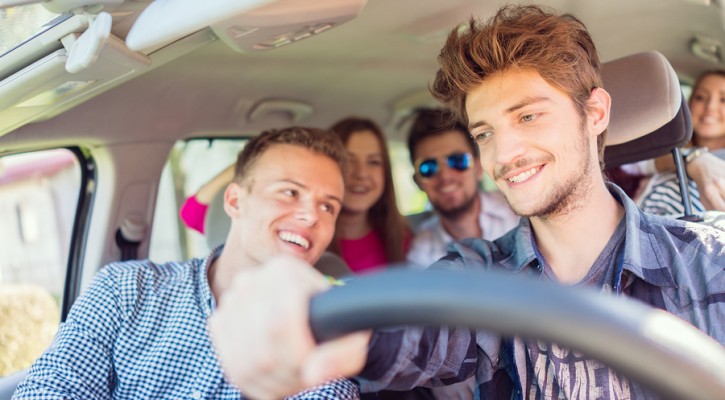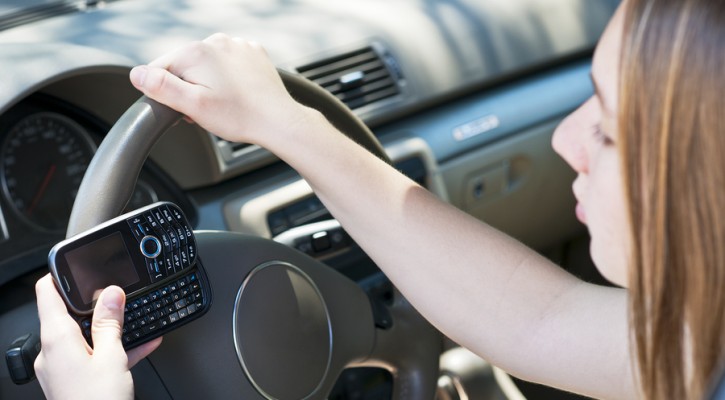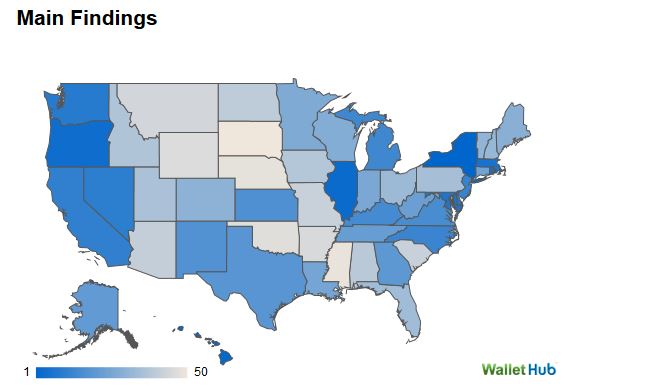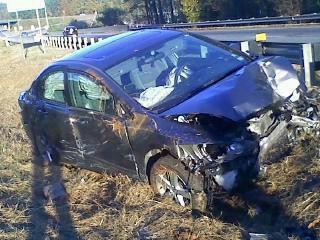Category Archive: Safe Driving

Planning For A Fun And Safe Spring Break
March 3, 2015
It’s that time of year again and the warm beaches of Florida are going to be prime destinations for spring breakers. Spring break is a lot of fun and can provide a lifetime of memories but it can also, just as easily, turn tragic. If you’re headed to the coast, remember the lessons learned in your drug and alcohol course as well as our top safety tips for a safe spring break.
- Maintain a buddy system – Travel with friends and stay with those friends to keep each other out of trouble. Along with college students, spring break also attracts unsavory types such as thieves and sexual predators. Don’t go off alone with someone you don’t know.
There are a lot of reasons not to drink but, if you feel you must:
- Have a plan – Plan on how you’ll get home safely, either by cab or a designated driver. Plan to limit your drinking. If you make a plan before you go out, chances are, you’ll stick with that plan but if you wait until after you’ve been drinking to decide what to do, your judgment will be clouded and you could drink yourself into trouble.
- Limit your drinking – While the effect of alcohol is different on everyone, a general rule of thumb is that it requires at least one hour for the body to process the alcohol from one drink. The more you drink, the longer it takes for the body to process the alcohol and get it out of your system. For females, who are generally smaller, one drink can affect you much more quickly than it will for a male and can take longer for the body to process.
- Binge drinking is deadly – Your body can only process so much alcohol before it becomes toxic. Alcohol affects your motor skills. You quickly start to feel the effect on the voluntary motor skills that control your speech, vision and ability to walk but too much alcohol can shut down the involuntary muscles controlling the heart and lungs and death from alcohol poisoning is the result. Drinking games look like fun but, for your own safety, make a plan before you go out not engage in any games that could lead to alcohol poisoning.
- Know what you’re drinking – Different drinks have different amounts of alcohol. Some sweet, flavorful cocktails can have up to four shots of liquor. Depending on your body size, a single cocktail can immediately put you over the legal limit.
- Females; guard your drinks – A female who leaves her drink unattended can easily become the victim of a sexual predator who has slipped Rohypnol (the date rape drug) into her drink. If you leave your drink unguarded at any time, dump it and get a fresh drink.
- Alcohol and the sun don’t mix – If you only drink alcoholic drinks when you’re out in the sun, you can easily become dehydrated. The combination of the sun and activities can quickly wear you out and alcohol will compound that effect. Switch off with water or fruit drinks.
- If it seems like a crazy stunt, it’s probably too dangerous – After drinking, spring breakers have died trying to show off by balancing on bannisters, doing pull ups off of hotel balconies, or trying to dive from a balcony into the hotel pool. Unfortunately, instead of stopping them, their friends, also under the influence of alcohol, urged them on. If you see someone trying to pull a dangerous stunt, try to stop them or call local security. You could save their life.
- Scooters and mopeds – If you rent a scooter or moped, make sure you’re familiar with its operation and watch out for other drivers on the road who may not be watching out for you. Never try to operate a scooter or moped if you’ve been drinking.
- Don’t party to the end – Don’t try to party up to the last second before leaving for home. If you’re driving, everyone in your party should try to get a good night’s sleep before heading home. Driving drowsy is just as dangerous as drunk driving.
- Stay alert driving on the road – Share driving duties and switch off with other drivers to remain alert. Long periods on a boring interstate can lead to “highway hypnosis”; avoid that by stopping every two hours or 100 miles to refresh yourself or take a short nap. If you have a long way to drive, don’t try to do it in a single trip. Stop and get some rest before continuing.
- DON’T DRIVE DRUNK OR DRUGGED!!!! – It should go without saying but there are far too many tragedies on spring break because people ignored this simple piece of advice!

Passengers Affect Teen Safe Driving Attitude
February 24, 2015
Teen passengers can have a big affect on a teen driver’s safe driving attitude according to a recent study published in the journal Health Psychology. According to the research, a teen passenger’s personal attitudes about risky driving habits can influence the teen driver to engage in risky driving behaviors.
It has long been known that, the more teen passengers there are in a teen driver’s car, the greater the risk of a crash. According to a 2012 study by the AAA Foundation For Traffic Safety, a teen driver’s risk of involvement in a deadly crash increases by 44 percent with one teen passenger in the vehicle. The risk doubles with two teen passengers and quadruples with three or more passengers.
According to the new study, a teen driver is more willing to engage in risky driving behaviors if he (this is especially true for male teens) perceives that his passengers approve of those risky behaviors. The passengers don’t have to specifically tell the driver to take risks but can give subtle clues of their approval.
To find out why this was so, the researchers studied 66 teen drivers in a simulated driving situation. The teens were told that they were being paired up for the simulation with another randomly selected teen (actually a young looking research assistant). The research assistants played two different rolls. Upon first meeting one assistant would arrive late and say “Sorry I was a little late getting here. Normally I drive way faster, but I hit like every red light.” The other research assistant would tell his teen partner “Sorry I was a little late getting here. I tend to drive slowly, plus I hit every yellow light.”
The teen was then asked if his partner could try out the simulator first “just for fun”. The research assistant who said he tended to drive fast would then “drive” the simulator without using a seat belt and in an aggressive manner. The assistant who said he typically drove slowly obeyed the traffic rules and drove as safely as he could.
The research subjects were then given the opportunity to drive the simulated course alone and then with their partner as a passenger. Their driving behavior was measured by tracking whether or not the subject failed to stop for red lights and how much time was spent in the intersection after the light turned red.
All the research subjects tended to take more risks when they had a passenger with them but those with the aggressive driving partner took far more risks that those with the risk-averse partner. Even though they had just met their passenger and the passenger didn’t pressure the teen drivers in any way, the teen drivers tended to adopt the risky or safe driving attitude of their passengers.
According to research by the Children’s Hospital of Philadelphia, only 10 percent of teens correctly view passengers as potentially hazardous. Teen peer pressure can be overt or it can be subtle. Teens who ride as passengers in another teen’s vehicle should be taught that it’s OK to tell the driver to stop his or her risky behavior. Both teen drivers and teen passengers need to be taught that the actions of passengers can be distracting to the teen driver and taught to modify their behavior accordingly.

Teen Driving App Effective In Modifying Teen Driving Behavior
February 9, 2015
A teen driving app for smartphones, developed by the University of Minnesota’s HumanFIRST Laboratory, is showing a lot of promise as an effective tool to modify teen driving behavior and keep teen drivers safe on the road.
There have been a lot of apps and different products developed over the years with the same intent but the developers of this app claim that this is the first developed based on years of scientific research.
Funded with $2.5 million by the Minnesota Department of Transportation, the HumanFIRST Laboratory spent almost ten years examining the issues surrounding teen crashes and developing the app. Those studies were followed up by a year-long, in-vehicle study involving teens and their parents.
The teen driving app is known as the Teen Driver Support System (TDSS) and among other things, the app:
- Prohibits the use of cell phones while the vehicle is in motion except to make 911 calls.
- Warns the teen driver if he or she is speeding or running a stop sign or red light.
- Warns that the teen is driving aggressively.
- Warns the teen that parents will be notified if the dangerous driving behavior continues.
- Notifies parents via text message if the warnings fail to stop the dangerous driving behavior.
- Provides parents with a website that documents the teen’s driving behavior over a longer period of time.
In the in-vehicle study, cars belonging to teen drivers were outfitted with instrumentation to record their driving behavior and the teen drivers were divided into three groups:
- Drivers with no app (control group).
- Drivers with app that provided warnings but didn’t notify parents.
- Drivers with app that provided warnings and notified parents.
The teen drivers without the app showed a greater tendency to engage in distracting and risky behaviors such as, speeding more than seven mph over the posted speed limit and using the cell phone both for calls and texting while driving. The app that only provided warnings was highly effective in modifying teen driving behavior but, as might be expected, the app that provided both warnings and parental notification had the most dramatic effect on the teen’s driving behavior.
Both the teens and parents involved in the study gave the driving app high marks although, also to be expected, the teens weren’t as enthusiastic about the app as their parents:
- 60 to 75 percent of teens had a favorable opinion of the system.
- More than 90 percent of parents had a favorable opinion of the system and;
- 90 percent of parents would recommend the app to other parents of teen drivers.
While the TDSS teen driving app isn’t yet available for general use, the University of Minnesota’s Office for Technology Commercialization is studying the system and the team hopes it will be available for general use within a year.
Read more: App developed at U alerts teens, parents to risky driving
PowerPoint presentation with study results: Supporting New Teen Drivers During Independent Driving

Best States For Teen Drivers: Florida Ranks 34th
January 14, 2015
In a list of best states for teen drivers, Florida ranked 34th according to a survey conducted for Wallet Hub. Wallet Hub is a website designed as a one-stop site to help individuals and businesses make financial decisions and their teen driver survey is primarily focused on the financial aspect of teen drivers in the home. However, teen driver safety issues and laws designed to keep teen drivers safe play a big part in the total cost of teen driving.
To conduct their survey, the researchers considered various aspects that contribute to cost and safety where teen drivers are concerned. Factors that were considered included:
- The number of teen drivers in each state
- Teen driver fatalities
- Impaired-driving laws
- Graduated driving laws
- Average cost of car repairs
- Cost of insurance
A correlation can be seen between strong graduated driving license laws (GDL) and teen driver safety. Several studies have shown that states with strong GDL laws have lower teen fatality rates. The Insurance Institute for Highway Safety (IIHS) created a GDL crash reduction calculator that shows Florida would experience a 20 percent reduction in insurance rates and a 45 percent reduction in teen fatalities if the state were to adopt the strongest GDL laws on the books in other states.
For a complete list of of the best states for teen drivers, visit: 2014’s Best and Worst States for Teen Drivers

Teen Drowsy Driving
December 8, 2014
Drowsy driving among teens is an issue that doesn’t get much notice when compared with all the other issues teen drivers face on the road but it’s a critical problem in the US. The following story is a typical example of the problem.
A 16 year old driver with less than 6 months solo experience behind-the-wheel set out, after school and cross country practice, with his 14 year old brother as a passenger to pick up their mother. Continue Reading
